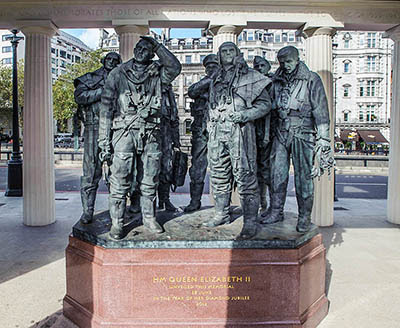February 11, 1945 - The British Commonwealth Air Training Plan (BCATP)
From the Operations Record Book:
Once again the Squadron stood by for operations with 18 aircraft and crews to attack the target they were briefed for yesterday. The weather forecast was anything but promising and after postponing the briefing time the operation was again cancelled. Owing to bad weather very little flying training was done.
---
With the benefit of vast open spaces, as well as the remoteness from the fighting in Europe, Canada made an ideal training ground for Allied airmen and more Bomber Command aircrew were trained in Canada than anywhere else.
The British Commonwealth Air Training Plan (BCATP), involved the establishment of ninety schools, the aim to train 50,000 men for the air force, including 20,000 pilots. The plan involved the creation of 3 initial training schools, 13 elementary flying training schools, 16 service flying training schools, 10 air observer schools, 10 bombing and gunnery schools, 2 air navigation schools and 4 wireless schools. Launched on April 29, 1940 and the first group of pilots graduated five months later at Camp Borden, Ontario. By the end of 1941, all but one of the schools had been built. Most recruits were between the ages of 18 and 24 and all were volunteers.
The BCATP ended on March 31, 1945 after graduating over 130,000 pilots, navigators, bombers, wireless operators, gunners and flight engineers belonging to the Royal Air Force (included Poles, Norwegians, Belgian, Dutch, Czechs and French), the Royal Canadian Air Force, the Royal Australian Air Force and the Royal New Zealand Air Force.
---
With the benefit of vast open spaces, as well as the remoteness from the fighting in Europe, Canada made an ideal training ground for Allied airmen and more Bomber Command aircrew were trained in Canada than anywhere else.
The British Commonwealth Air Training Plan (BCATP), involved the establishment of ninety schools, the aim to train 50,000 men for the air force, including 20,000 pilots. The plan involved the creation of 3 initial training schools, 13 elementary flying training schools, 16 service flying training schools, 10 air observer schools, 10 bombing and gunnery schools, 2 air navigation schools and 4 wireless schools. Launched on April 29, 1940 and the first group of pilots graduated five months later at Camp Borden, Ontario. By the end of 1941, all but one of the schools had been built. Most recruits were between the ages of 18 and 24 and all were volunteers.
The BCATP ended on March 31, 1945 after graduating over 130,000 pilots, navigators, bombers, wireless operators, gunners and flight engineers belonging to the Royal Air Force (included Poles, Norwegians, Belgian, Dutch, Czechs and French), the Royal Canadian Air Force, the Royal Australian Air Force and the Royal New Zealand Air Force.


Comments
Post a Comment